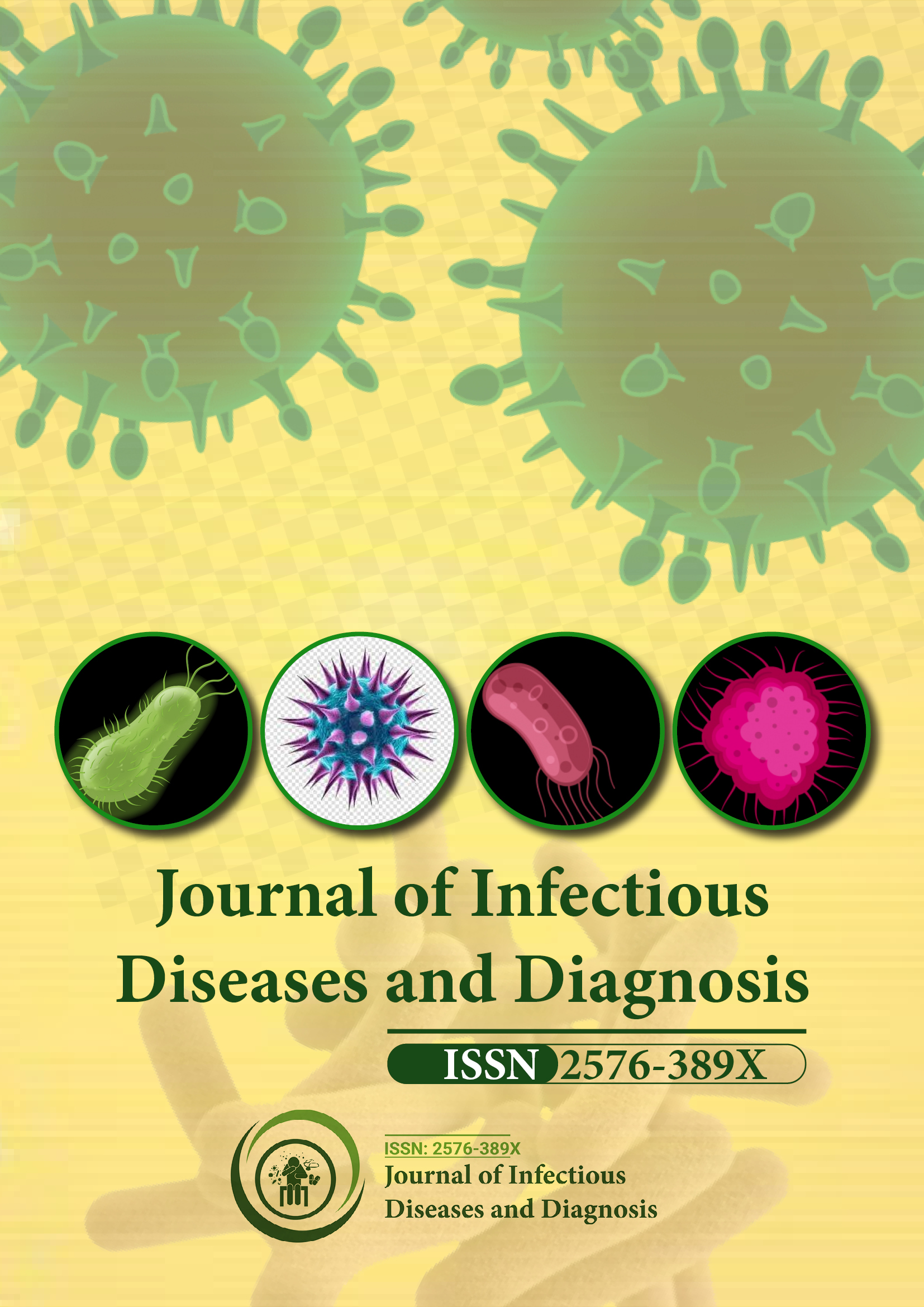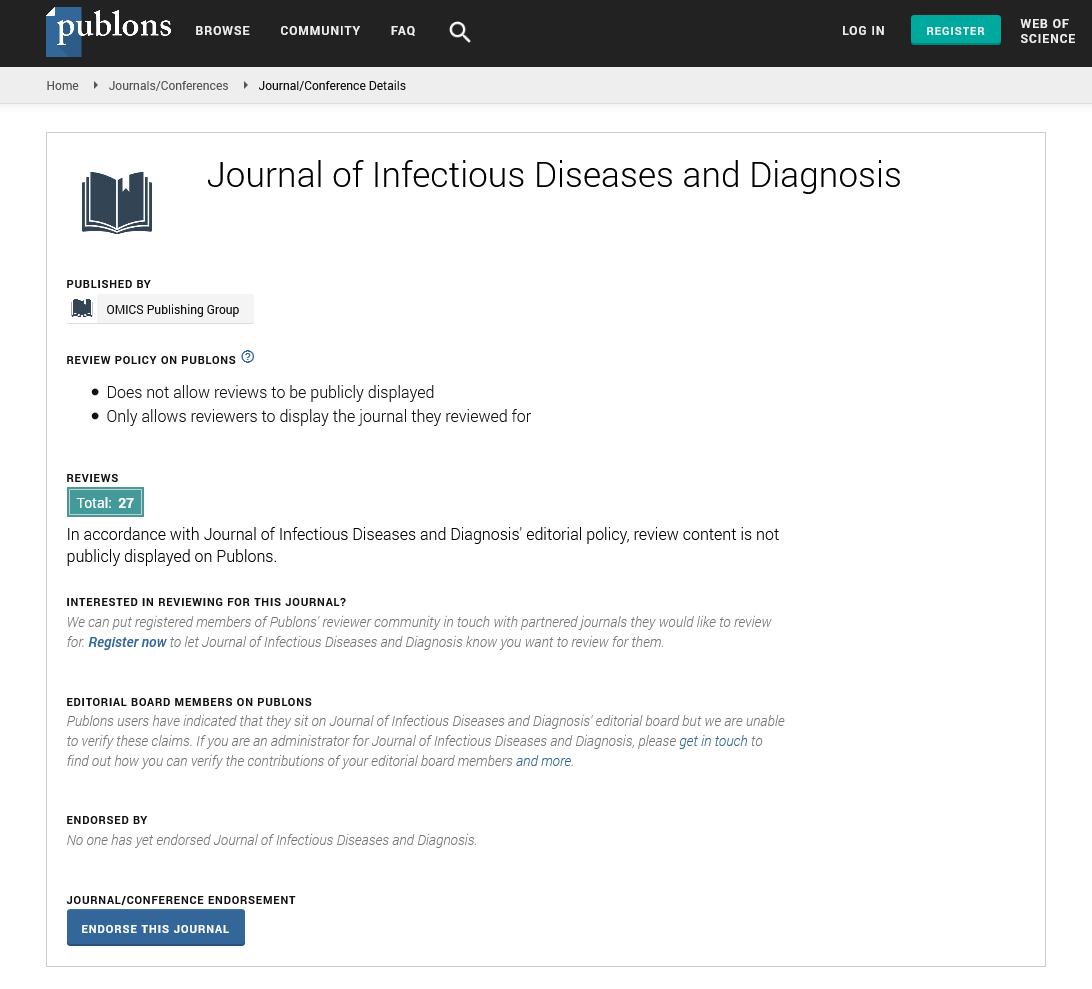Indexed In
- RefSeek
- Hamdard University
- EBSCO A-Z
- Publons
- Euro Pub
- Google Scholar
Useful Links
Share This Page
Journal Flyer

Open Access Journals
- Agri and Aquaculture
- Biochemistry
- Bioinformatics & Systems Biology
- Business & Management
- Chemistry
- Clinical Sciences
- Engineering
- Food & Nutrition
- General Science
- Genetics & Molecular Biology
- Immunology & Microbiology
- Medical Sciences
- Neuroscience & Psychology
- Nursing & Health Care
- Pharmaceutical Sciences
Opinion Article - (2022) Volume 7, Issue 6
Analyzing Social Connectivity to Control Contagious Diseases
Sabella Elita*Received: 02-Nov-2022, Manuscript No. JIDD-22-19287; Editor assigned: 04-Nov-2022, Pre QC No. JIDD-22-19287 (PQ); Reviewed: 22-Nov-2022, QC No. JIDD-22-19287; Revised: 29-Nov-2022, Manuscript No. JIDD-22-19287 (R); Published: 02-Dec-2022, DOI: 10.35248/2576-389X.22.07.191
About the Study
Contagious diseases and their consequences can be reduced to a greater extent by employing appropriate mathematical or statistical models that understand connection and dissemination patterns among populations. Throughout this research, an approach to determining optimal connection has been provided. As a result, this is only achievable through examining network formation models and comparing them to real-world data. The connection coefficient is used in the study to improve infectious disease modelling and to test the Susceptible-Infectious-Removed stochastic model. Furthermore, the suggested model's results are examined in the context of risk quantification, as it aids in the tracking and avoidance of infections in order to prevent new outbreaks of the diseases.
Epidemics have always posed a significant threat to humanity. In the twenty-first century, many diseases have taken on new contagious forms in the form of fatal transmissible methods. However, improvements in Technology, Mathematics, and Life Sciences have occasionally resulted in the development of several successful instruments for tracing and controlling such disorders. Despite good scientific contributions, the expanding human population makes managing these diseases highly demanding. The intricacy of social networks, as well as the spread of diseases due to faster and easier virus movement, is the primary causes of an epidemic becoming a global pandemic. These problems can be handled by reviewing numerous models established during previous epidemic times and learning from their failures. All of these models, however, have key standardized elements that let us build new models each time we encounter a new virus strain.
The Susceptible-Infectious-Removed (SIR) model developed by Kermack and McKendrick helps to model an epidemic in a particular population by categorizing individuals as susceptible, infectious, or removed and tracking their rate of change over time. However, this is a simplified model in which the transformation of infection into an epidemic or pandemic is heavily influenced by the population's characteristics, socioeconomic structure, and social networks. A poorly populated area, for example, will have a lower transmission rate than a densely populated area. Similarly, a more sanitary environment will be less likely to become infected.
Infectious diseases can be more successfully controlled by incorporating contact tracing and SIR into the mathematical or statistical model. This is why, in this research, we developed a reformed version of the existing SIR model as the Network SIR (NSIR) model, which includes contact tracking and risk quantification aspects. In this model, we have adopted numerous principles from network theory, population dynamics, and other epidemiological models to efficiently measure the infectious rate, recovery rate, and so on.
We observed numerous networks in order to make the results more realistic. Real-world networks are not the same as mathematical models; yet, studying real networks gets us one step closer to modelling them. The introduction of connection probability in the SIR model is the model's distinguishing feature. It delivers a detailed population analysis. Because of the desired results, acknowledging a real-time network allows the connection probability value to update with the location, time, and change in relationships between people. The outcomes of the experiments match the predictions of the model exactly, which aids in the search for solutions to manage the pandemic.
During infectious outbreaks such as COVID-19, our model is valuable for forecasting outcomes and adopting appropriate actions to control the spread. This model can be used to track the spread of infection in diverse populations on a regular basis. Future infectious situations can be compared with the addition of technologies like pairwise comparison techniques. It is useful in regions with subpar medical services when treating serious cases. By taking into account actual social networks, which aid in incorporating human behavior into the model, models can be improved.
Citation: Elita S (2022) Analyzing Social Connectivity to Control Contagious Diseases. J Infect Dis Diagn. 7:191.
Copyright: © 2022 Elita S. This is an open-access article distributed under the terms of the Creative Commons Attribution License, which permits unrestricted use, distribution, and reproduction in any medium, provided the original author and source are credited.

